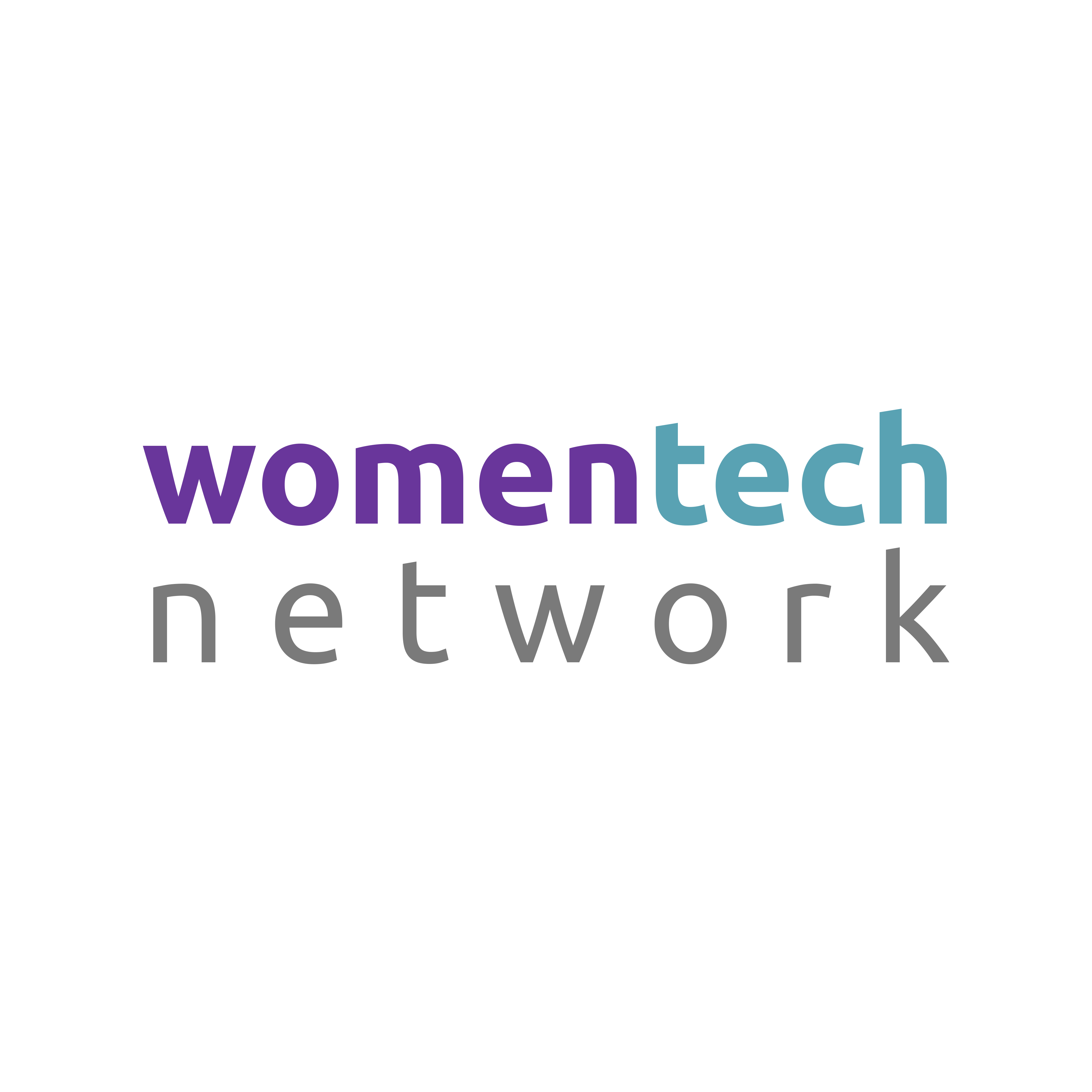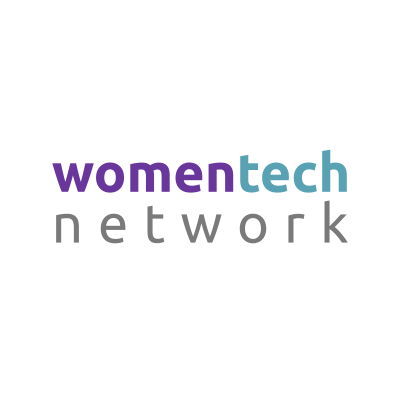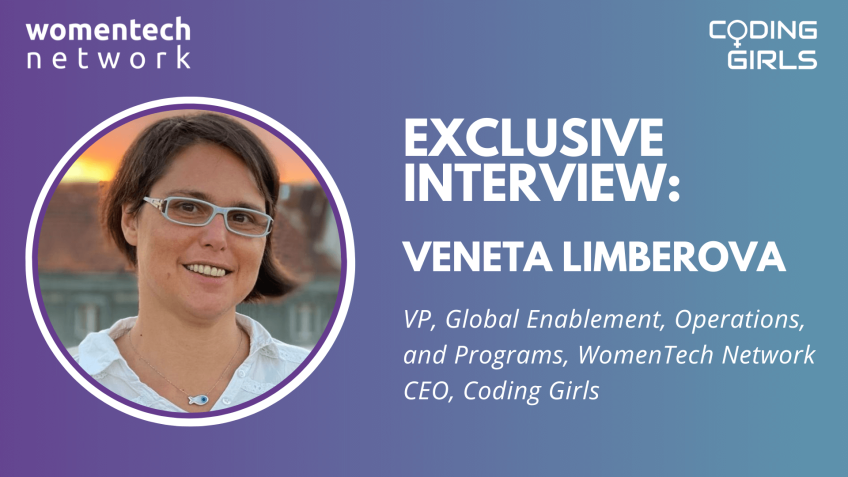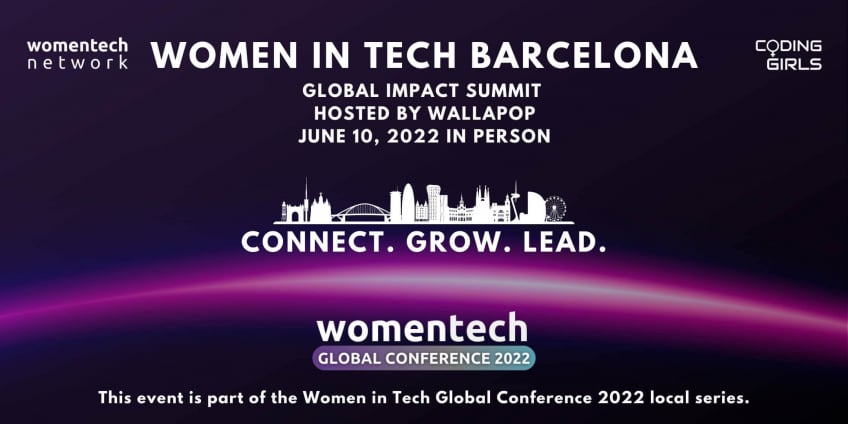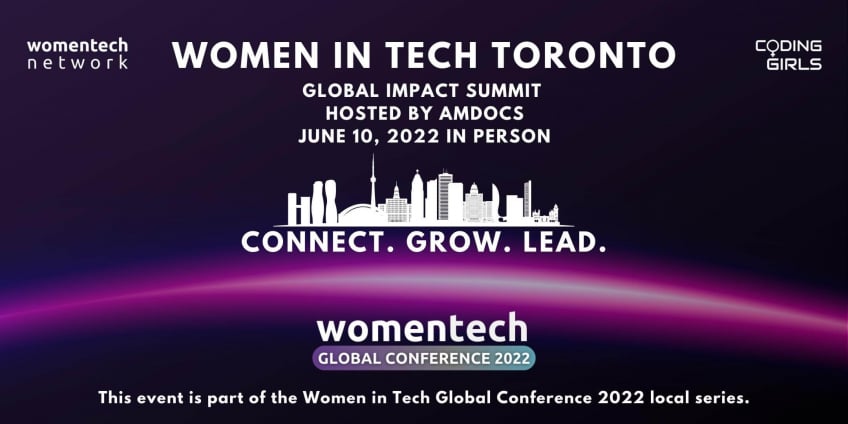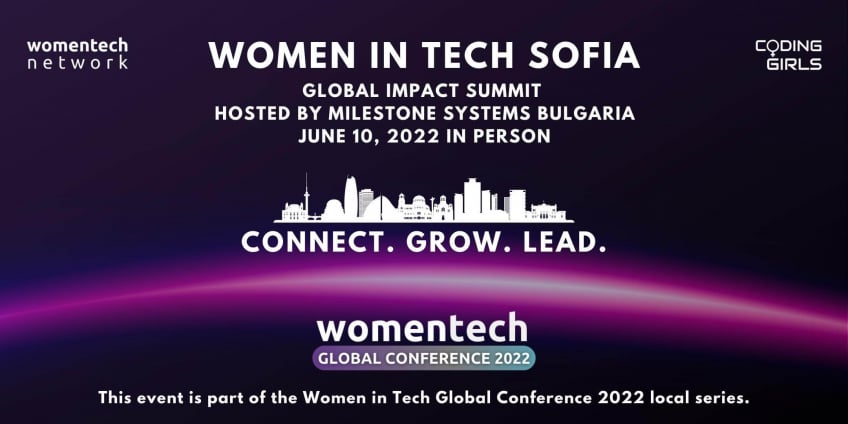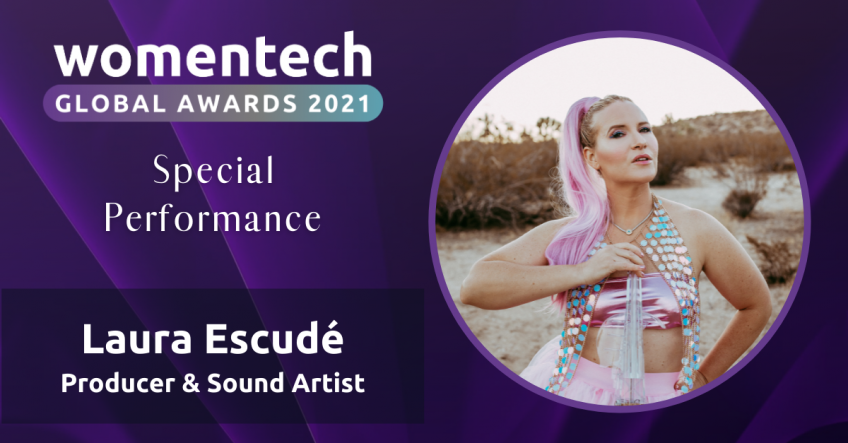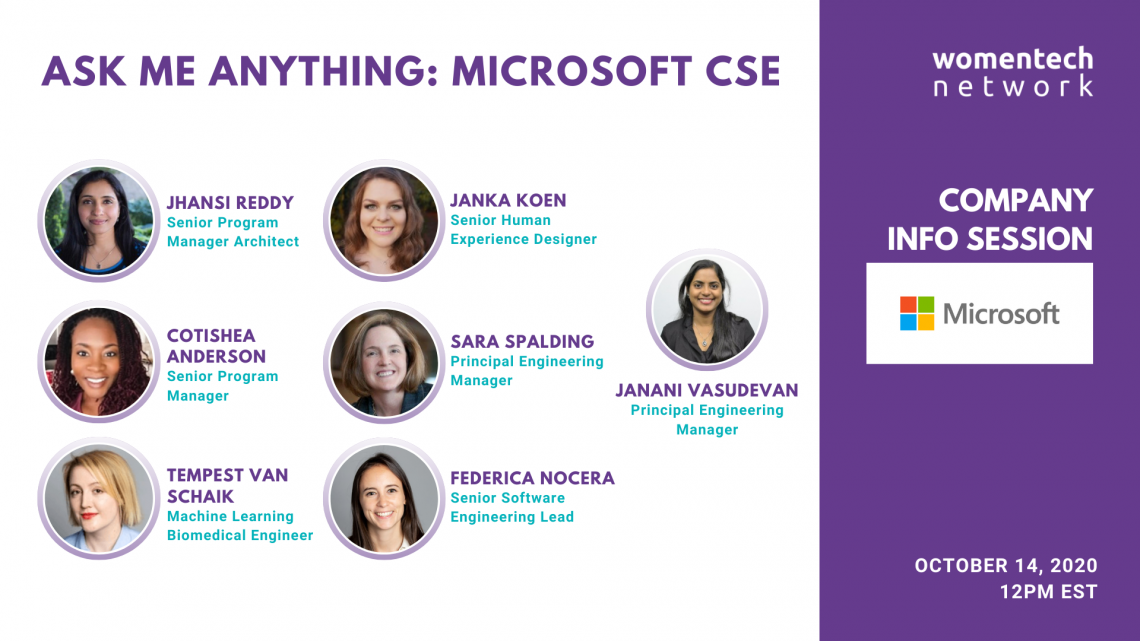
Microsoft CSE is a global engineering organization that works directly with the largest companies and non-profits. They tackle the most significant technical challenges. Like their customers, the CSE team boasts a wide range of backgrounds and experiences and allows them to approach customer problems in a unique way.
Several experts from different areas at CSE joined us on Oct. 14th to share their career stories and answer questions by the hundreds of WomenTech Network members who attended.
Click on the speakers' names to see their profiles or on the time stamps if you want to watch that moment from the chat.
Watch the video below to see all the questions that were asked and answered by the CSE team.
Janka Koen, Senior Human Experience Designer:
What is human experience? Think of it as user experience, but instead of focusing on a small group of people, her team focuses on the entire spectrum of the human experience.
Janka started at Microsoft 8 years ago with a background in software engineering and multimedia.
She was the only female in her class, in fact, and she noticed that whenever there was a group project, her classmates would go “Oh, make it look pretty.“ After initially taking offense, she saw an opportunity to marry her creative side and love for coding by making things look pretty through UX.
When she first started at Microsoft, Janka was excited to be at the company, but she was disappointed to see that her official position wasn’t related to UX at all. UX wasn’t much of a thing within their consultancy services at the time.
I said to my manager, ‘I want to do UX.' He said ‘We don’t do UX, we don’t sell UX, and if you want to do UX, you’re probably not in the right place.’ I was miserable. You finally are in the dream company, but in a job that doesn’t fit your personality […] So I go into this client meeting, planning not to say anything because I was still new, and the meeting is with the CIO, and he says, ‘It’s all perfect, I have the full confidence in the technology, but the experience is really the most important thing. So who from you can talk to me about experience?' I am thinking, ‘I was told not to speak.' Yet, I raised my hand and said 'me’.
That ended up in a separate meeting with a couple of engineers from the customer side. In the end, the customer called and asked for Janka to be on the project for the remainder of it. A couple of months later, Janka became one of the first UX consultants within the consultancy division of Microsoft for Western Europe and EMEA.
If you find what you want in this industry, if you won’t speak up, you won’t get it.
Can linguistics be a part of a human experience design team? What skills are needed for such a role?
It’s interesting to look at the CSE organization and Microsoft. Linguistics is important because people connect the same way with the images, with amazing technology that just works, with the content and copy. So, absolutely; we are now in the role of crafting all these messages and how to position them. There is a lot of opportunities; my team is looking into scaling up. I encourage the person who asked the question to apply to see if there is an opportunity; and if not within the CSE, the entire Microsoft organization has a large pool of amazing, talented designers, who are working with linguistics as well on how we position ourselves.
Watch the video below to see all the questions that were asked and answered by the CSE team.
Tempest van Schaik, Senior Data Scientist in the Health Industry:
Tempest is also a biomedical engineer with 15 years of experience in health technology. She is a full-stack innovator with experience in data science, medical technology, medical UX, and product design. She works very closely with all the other roles on the CSE team.
People often ask Tempest how she got into her role, which is an intersection of data science and health care, a relatively new field. Tempest is from South Africa. She was actually in the first biomedical degree in the country, and probably one of the earlier ones in the world.
She went this way because she loved science fiction growing up and was interested in sci-fi and cartoon characters with biomedical enhancements. It was actually an advert for a prosthetic limb in a magazine she saw at school that hooked her.
Initially, she was interested in designing robotics for humans, and did a degree in biomedical engineering as well as electrical engineering. After doing the two degrees, there weren’t too many jobs for biomedical engineers. There have been more opportunities in the last five years or so for a number of reasons like big tech companies have an interest in healthcare, wearables became popular, genomics became a topic.
A lot of people don’t know what it means and what qualifications you need. I’ve been lucky enough to find jobs that can use my degrees or I could craft a position around my degrees. Initially, I was interested in the medical devices, but I became increasingly interested in the data the devices were producing, so I switched my focus towards data science. […] At Microsoft, I’ve worked on Physio, which is about trying to improve physical therapy care for children with cystic fibrosis. More recently, I’ve become increasingly interested in fairness and bias in healthcare. I recently worked on a healthcare project that involved responsible AI.
How do you collaborate with engineering teams effectively?
We are not a data science team that creates notebooks and then send the notebook to the engineering team to do something with them. The data science team has to adhere to the same software engineering standards as the software engineering team. I think it really helps that we work closely together and use the same language.
Watch the video below to see all the questions that were asked and answered by the CSE team.
Federica Nocera, Principal Software Engineering Lead:
Federica leads a team of software developers, working on some of the most interesting and challenging problems, integrating Azure in their customers’ work. She has a background in ML and is passionate about bringing ML into production.
Federica studied mechanical engineering as an undergrad. Then, she worked in finance for a while, building large Excel spreadsheets to determine the value of different stocks of companies, among other duties. However, she felt there was a better way to analyze data than using Excel.
That led to grad school to change trajectory and pick up some data science skills and really improve her programming. She really wanted to become a data scientist to explore the areas that she found interesting like the dynamics between people, the organizational dynamics that she had seen in the financial institution. Federica generally has a passion for sociology and understanding people in a quantitative way as well as a qualitative way.
After grad school, she worked as a data scientist creating machine learning models for marketing for the Xbox team. That work really led her to CSE.
I feel a bit like a sheep in wolf’s clothing; I used to be a data scientist, and now I am a software engineer. To me, it really helps to understand the challenges and some of the cultural differences that can be within an organization, especially in customer organizations between engineering teams and data science teams. Both perspectives and both approaches are really needed and really valuable. You have to kind of have an insight into both to be able to collaborate effectively, and you need to be open to that as well. I am lucky that I have that background in ML and can relate to the struggles and challenges from both perspectives. But Tempest she is always very open to diving into DevOps and having the infrastructure background.
You have to be, first and foremost, very analytical and inquisitive of data. It’s really about rationalizing the data and asking about relevant business problems of data. That’s where it all starts. You have to be very willing to learn. Google or whatever you need to do to understand new techniques, new programming tools, etc.
Watch the video below to see all the questions that were asked and answered by the CSE team.
Janani Vasudevan, Engineering Manager:
Janani has been in Microsoft for a long time and in different roles: engineering manager, program manager, and more. She loves the company.
Janani worked at Microsoft India for about six years before she moved to the U.S. Besides changing her whole life, she also knew she wanted to be a lead, and had mentioned that to her manager.
One of the leads left and Janani’s goal came true. A few months into the role, her manager told her there was another team, working on Windows 8 at the time, that had a lot of work and needed a new lead. Janani was offered the position if she wanted it. She was thinking about how her other team was still adjusting to a new manager, and it would be destructive for them, but there wasn’t enough work in that team either.
She decided to manage both teams. It was a win-win situation. It was going to be helpful from the product perspective, from the people’s perspective. Janani wanted to make sure her team feels they have someone to support them and that they have the right kind of work. Her manager was reluctant but in the end, they decided to do it. She managed a team of 12 people for about 8 months.
It’s something that I look back to this day, and I feel like it’s about trying out what you want to do. When you unpack any decision that you make, you’re actually going through data processing and you actually have the data to support that decision.
The lesson that I leave for folks to ponder on is, don’t hesitate to bring yourself as you are. You don’t have to be aggressive, you can be a compassionate leader. You can be who you are and still be the best at the job.
What does it take to culturally fit at Microsoft? What person excels at MI?
Being respectful, being able to have conversations, and express opinions in a respectful way, so we can foster a diverse and inclusive environment.
Decisions that we make have to be centered around being truthful around ourselves and our customers. It’s about integrity.
The last thing is accountability, that you are accountable for your decisions, good and bad. Being able to talk about them, take responsibility, and move forward. That’s the kind of work we call the growth mindset.
We are looking for people like that who are able to be respectful and fit in this environment. Also, someone who is ready to learn. What you know today is not going to be relevant 5 years from now.
Watch the video below to see all the questions that were asked and answered by the CSE team.
Sara Spalding, Principal Engineer Manager, Financial Services Industry Engineering Team:
Her team is world-wide and Sara enjoys helping them work with their customers to solve problems together. More than that, her focus is on helping their engineers grow and develop in their careers. Her own background is in software engineering. She’s worked on products like Internet Explorer.
One of the things that people ask Sara is whether they should continue to be an individual contributor or become a manager.
At Microsoft, we believe in the value of individual contributors and acknowledge the skill set that a great engineer has is not always a perfect overlap with the skillset of a great manager. Becoming a manager is not the only way to be successful. So, think of the contribution that you want to have. Is there a specific problem you want to solve, a skill you want to develop? Don’t be concerned with the role of the impact you want to have for you and the organization.
Sara worked in product development, then moved to Boston, and then joined what was to become CSE. She started as an individual contributor and worked with the leadership to figure out what the business was gonna be, how they were gonna connect with customers. She worked with engineers and data scientists, and they were all autonomous. When they scaled, it made more sense for people to have local managers. So, she became one, but not because she just had that idea of it being the logical next step. It happened because that was the impact she wanted to have and the business needed.
One takeaway for participants to take home?
The biggest piece of advice I have is to be intentional. Think twice about what your motivation is. Is it your inner cheerleader or your doubting self talking to you. Think about what advice you would give a friend and apply the same level of ambition and enthusiasm to your own work.
Watch the video below to see all the questions that were asked and answered by the CSE team.
Cotishea Anderson, Senior Program Manager:
Cotishea’s background is in Computer Science; however, she did little programming and shifted quickly to project and program management, where her passion lies.
Cotishea is a Computer Scientist by degree. She was a child of technology. At a very young age, she got involved in a light version of a programming class. Coming from a small town, she felt like she didn’t have many options besides becoming a lawyer, doctor, etc., and she really wanted out of the small town.
At church, she heard a speaker who was talking about how he was a computer scientist. For her, that was just a wow job. It seemed her passion met the perfect career that could get her out of the small town. So Cotishea decided then and there to be a computer scientist, not knowing what it would be like, but she stuck with it through college. She didn’t like programming after university though.
She did, however, had the opportunity to pursue a master’s in project management, sponsored by the company she was working for and her life opened up.
What does that transition look like? It’s a decision you make personally. If you’re interested in playing the larger role and seeing the bigger picture, it’s for you. If you’re interested in seeing something happen from beginning to end and driving teams to deliver that, then project management is great for you.
The great thing about it is that you’re able to compartmentalize things a bit better. It’s given me the ability to have so many different avenues, open up my life, enjoy my passion for tech, travel the world.
One of the things as well was joining Microsoft after 20 years in telecommunications; it was humbling to kind of start over. Advice to anyone shifting industries, we often think of it as vertical, sometimes it’s just a jungle gym, taking that next best step and giving yourself grace. No one gets it perfect. We are so hard on ourselves. It’s about giving your absolute best. Take the chance, so you don’t have regrets ten years from now.
How did you figure out PM was more interested than software development?
During my first experience in PM, we were making sure that a lot of the systems were updated for Y2K. I was on the engineering side, making sure the coding was accurate. Someone had to go on leave, and I realized I had to fill in for them for a week.
I loved it. I loved making sure things got done. I loved making sure everyone was aligned and everything was in order. It was that passion in me that aligned with having the experience and knowledge in technology.
Watch the video below to see all the questions that were asked and answered by the CSE team.
Jhansi Reddy, Senior Program Manager Architect:
Jhansi came from a small town in India, and graduated in engineering. They had 200 people in the class, only 12 women. Often times that meant she was the only woman at the table. The learnings she took from that opened the world for her.
After working as a software engineer for several years, I wanted to be home with my kids. The thing I wanted to mention is, even though I made that decision, I had my long-term goals in mind. I thought what can I do to stay relevant. That means you need to plan. I applied for a job at a local community college and kept in touch with the technology.
That really opened the doors for me when I went back and applied to jobs. I got a job at Microsoft at the learning team and then moved on to CSE. So you need to plan and advocate for yourself in the long-term.
Why is CSE a dream job? Jhansi believes you get a lot of purpose and satisfaction when you help others, which is what they do with their customers. That is the most exciting part of the job for her. She also works with the tech and with interesting technology.
What do you do keep yourself sane during the pandemic?
I've always been an outdoor person. I’ve kept with that hobby. It has had a calming effect on me. It gives a great break away from the computer. My goal was to do this very hard 22 mile hike. I’ve been training throughout the summer and just managed to do it a few weeks ago.
Join us for future chats with amazing women here or join us at WomenTech Global Awards 2020 here. Nominations are also still open. Nominate today.

